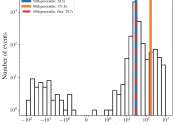Early galaxies not as massive as initially thought, study finds
When astronomers got their first glimpses of galaxies in the early universe from NASA's James Webb Space Telescope, they were expecting to find galactic pipsqueaks, but instead they found what appeared to be a bevy of Olympic ...









